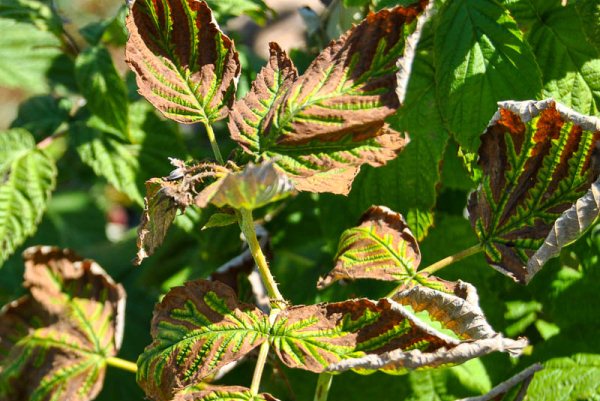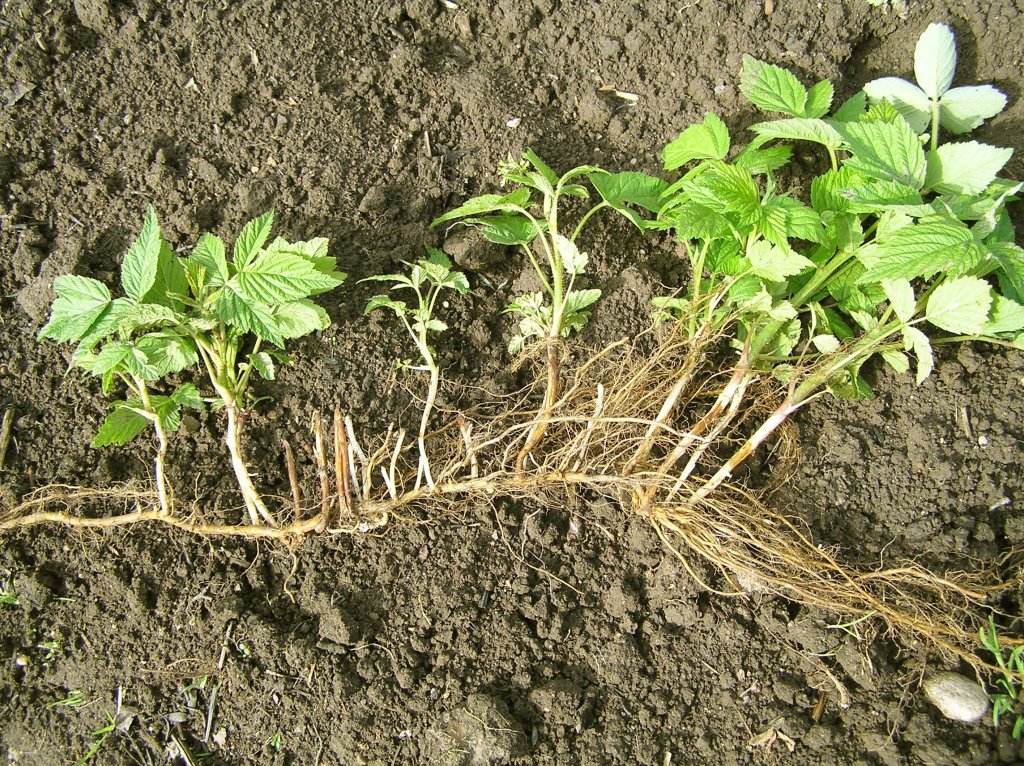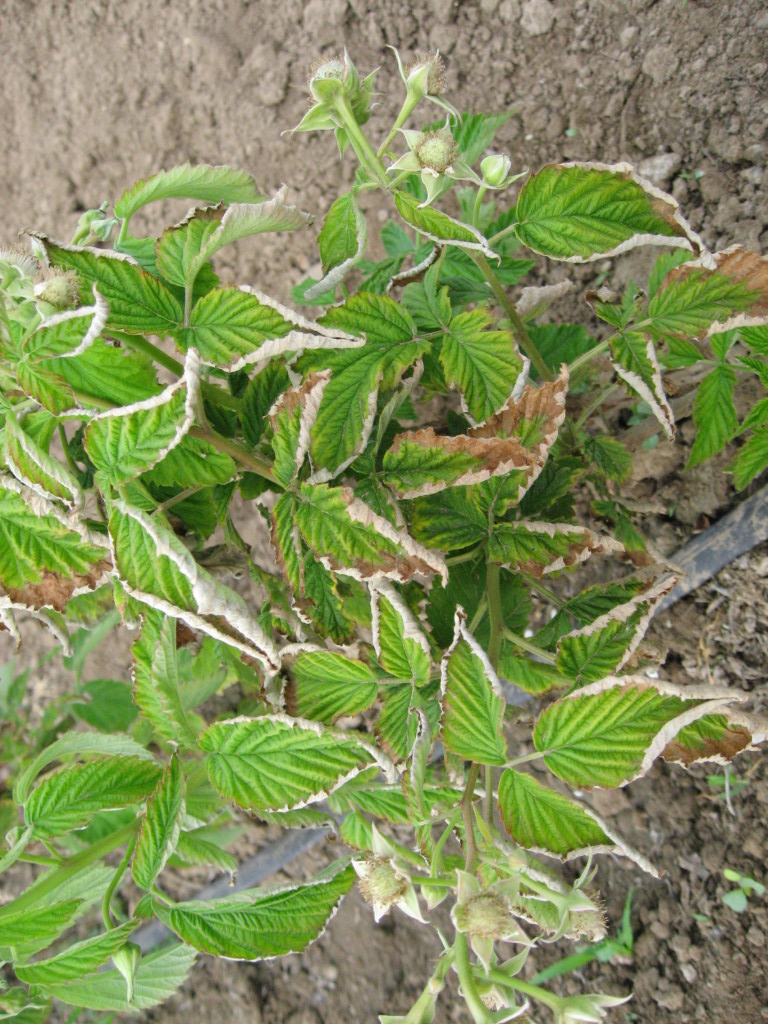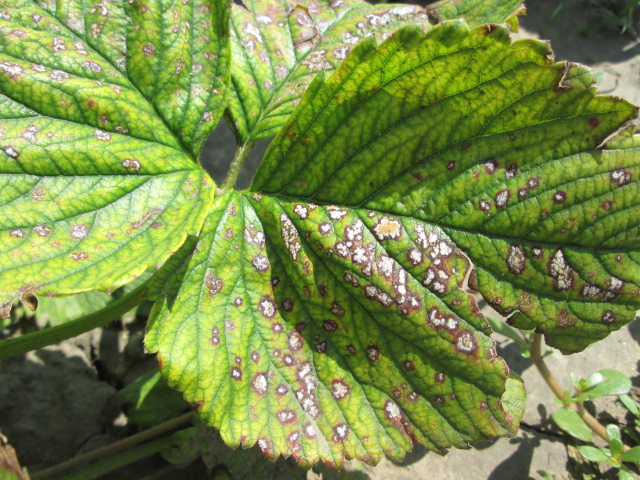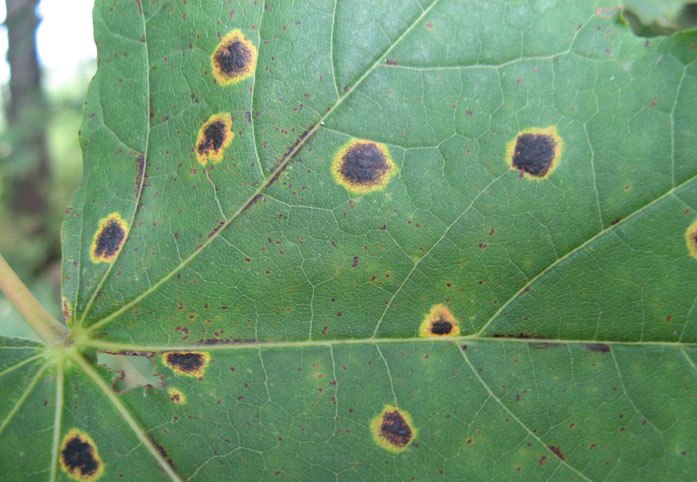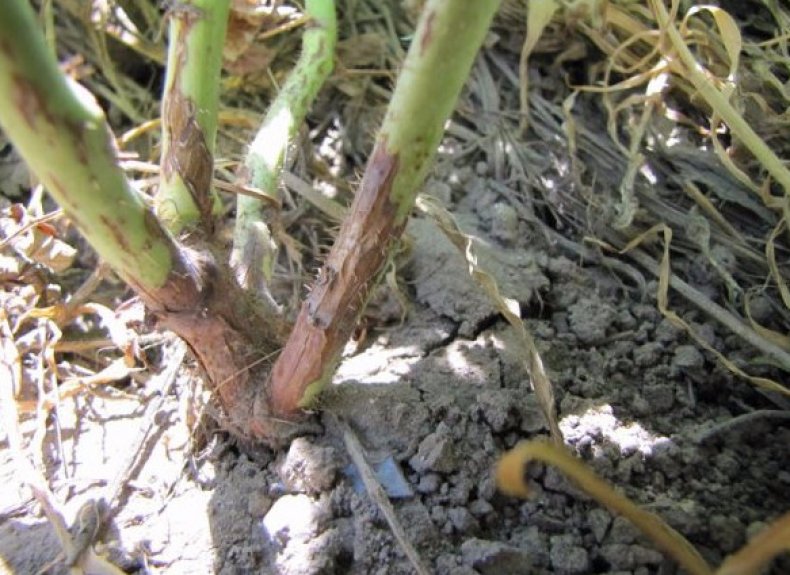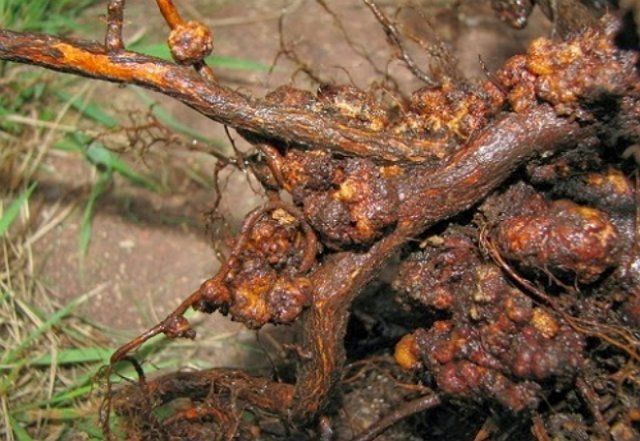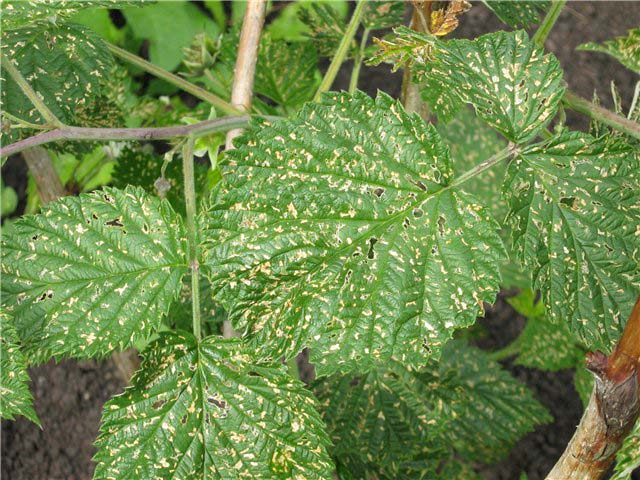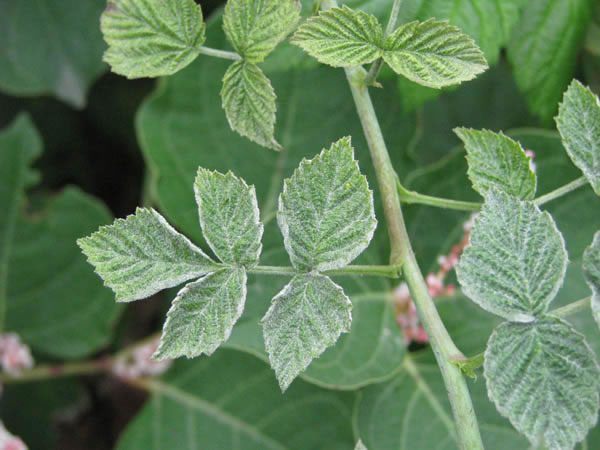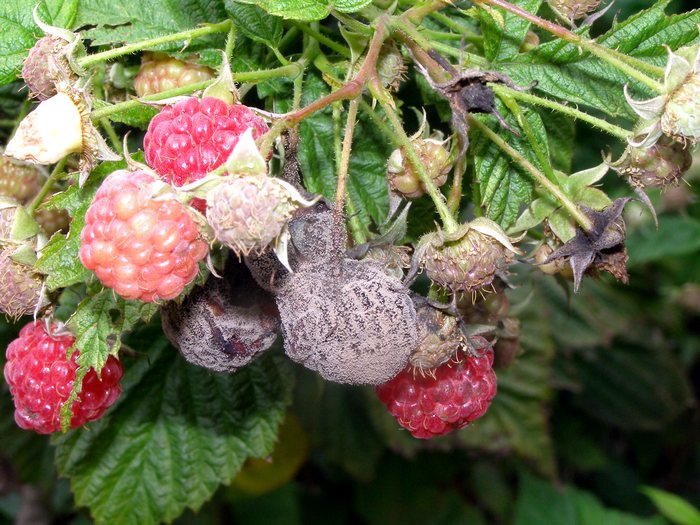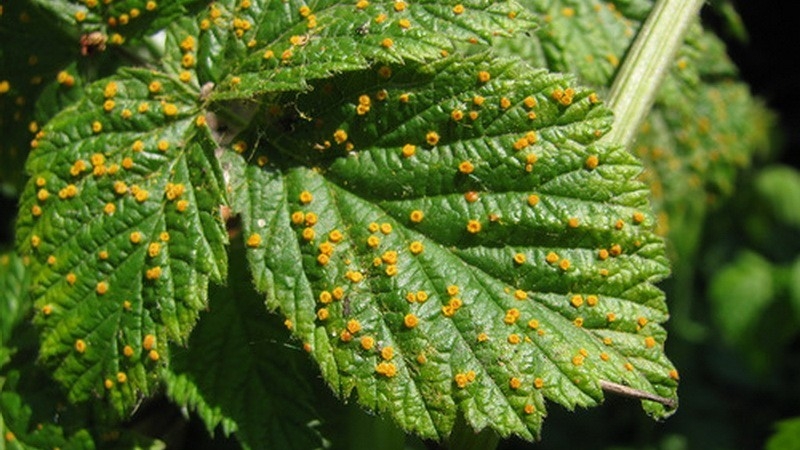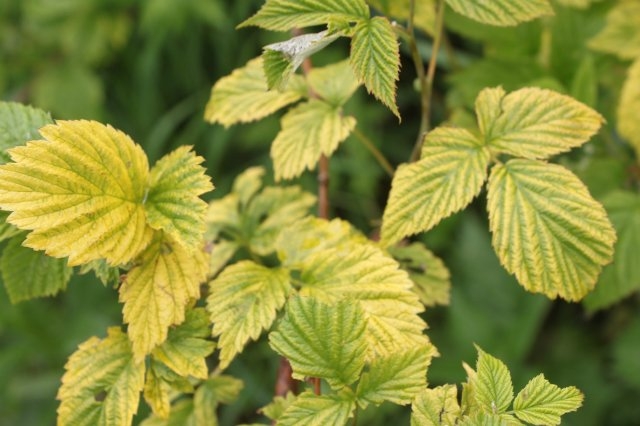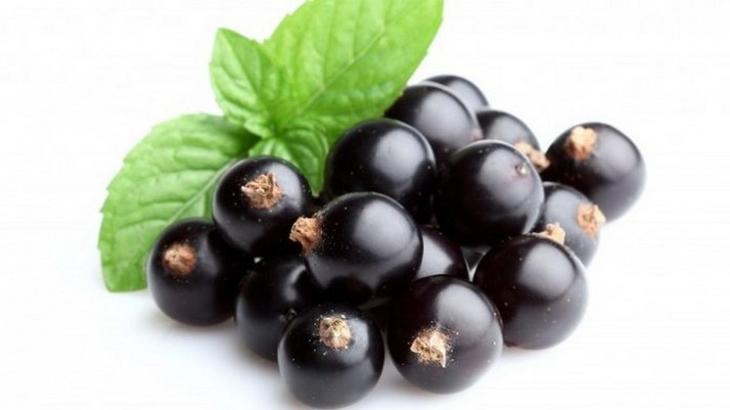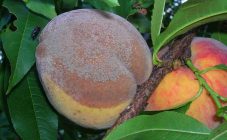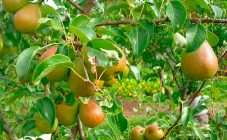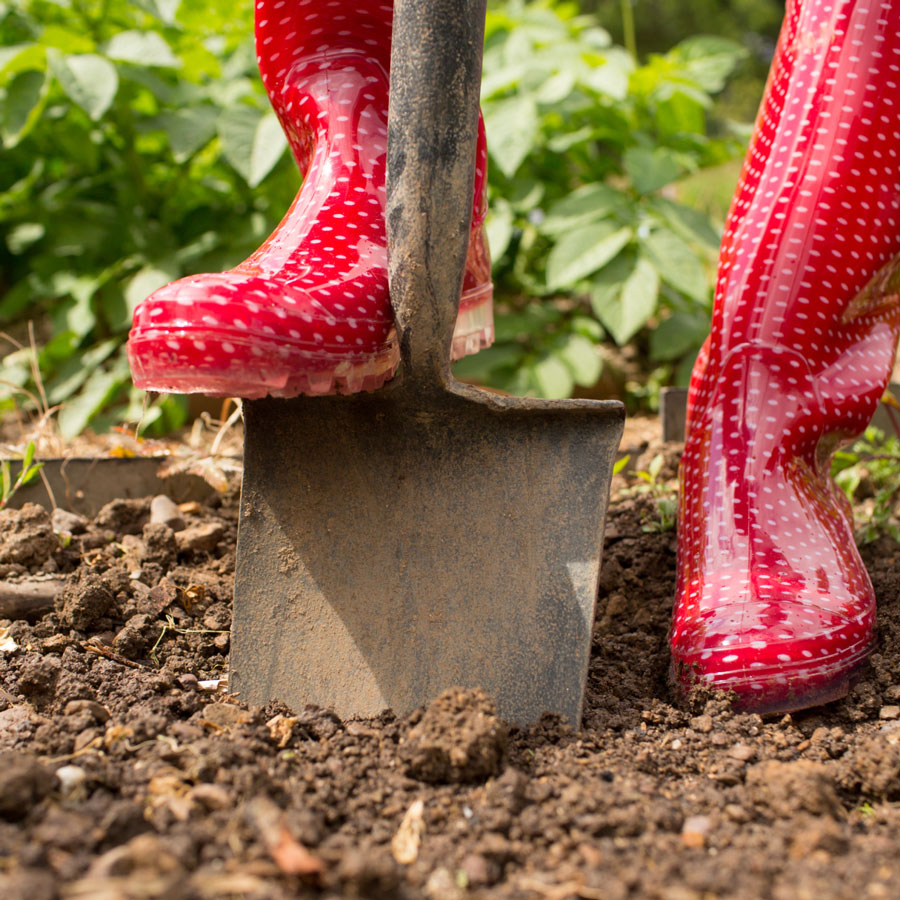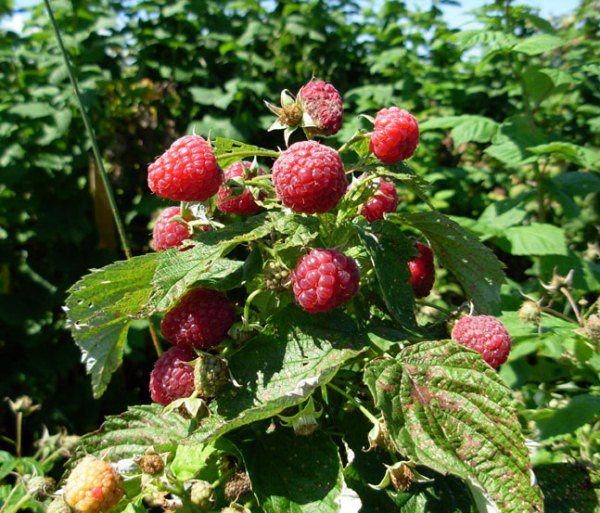Content:
- Raspberry anthracnose
- Witch's broom
- Verticillary wilting, or wilt
- Raspberry curl
- White spot
- Ring spot
- Purple spot
- Ulcerative spot
- Bacterial root cancer
- Raspberry mosaic
- Powdery mildew on raspberries
- Gray rot
- Raspberry rust
- Chlorosis of raspberries
- Gall midge on raspberries
- Preventive measures against raspberry diseases
- Video
Raspberries are grown everywhere. This delicious and healthy berry, the healing raspberry leaves have made the plant popular among gardeners. Berry bushes must be properly cared for in order to avoid the development of diseases and pest attacks. The article discusses the main diseases of raspberries, the reasons why the leaves of raspberries turn yellow in spring, signs of the disease, measures of prevention and control.
Raspberry anthracnose
Anthracnose is a fungal disease that affects raspberry bushes. The main causes of the appearance of the disease are excessive soil moisture, frequent and abundant watering of the plant. The fungus is often found in humid regions. Signs of anthracnose:
- With anthracnose, small spots of gray can be seen, a purple rim forms on the foliage;
- After a while, the leaves begin to fold, then they wither and fall off;
- The flowers dry out, the bark flakes off.
Disease prevention:
- Planting healthy young seedlings on the site;
- If affected leaves appear, then they must be cut off;
- The bushes are treated with foundation, benlate, topsin. The affected bushes are treated every 10-12 days.
Witch's broom
Witch's broom is a mycoplasma disease of raspberries, it is called overgrowth. The carriers of the disease are leafhoppers with aphids, they feed on the juices of the bush during the growing season and infect it. Another reason is contaminated planting material. Signs of the disease:
- The bushes are deformed, young shoots stop developing;
- A large number of non-fruiting shoots are formed (about 200 pcs.), Grow up to 50 cm in height;
- After two seasons, the berries do not ripen, but stop growing.
Consider the treatment of the disease Witch's broom on raspberries. The disease may not be noticed immediately. It appears after several seasons, with a strong growth of small non-fruiting shoots.
Verticillary wilting, or wilt
A fungal disease quickly infects raspberries. The cause of verticillary wilting is contaminated soil; it gets into the seedlings when planting. Signs of the disease:
- Cracking of the bark;
- Yellowing and wilting of leaves;
- Young shoots do not develop.
Preventive measures - choose the right area for raspberries. It is not recommended to plant young seedlings if potatoes and tomatoes were growing in the garden. The fungus can live in soil for up to 14 years.
Raspberry curl
Curly is a viral disease. Ticks and aphids are carriers of the disease. Signs of curliness:
- Foliage curls up, twists into tubes;
- On the reverse side, the leaf becomes bronze;
- The calyx of flowers grows, deforms;
- The fruit stops forming.
Ways to combat curliness:
- Aphids can carry the virus. Therefore, the plant is recommended to be treated with Fitoverm, Karbofos, Kemifos and Funanon;
- If the raspberry bush is severely affected, then it is immediately dug up from the site so that the rest of the bushes are not infected.
White spot
Septoria, or white spot, is a fungal disease that affects raspberry bushes. Signs of the disease:
- Brown spots form on foliage and stems;
- After a while, the spots begin to turn white, a brown edging forms on the leaves;
- When sporulation begins, black dots appear;
- Shoots and buds are affected, the bark crackles, it begins to crumble, the trunk collapses. Shoots and buds die off over time, the bushes stop yielding.
Ways to fight:
- An overdose of nitrogen fertilizers can provoke the appearance of a fungus, therefore it is important to follow these measures when feeding the bushes;
- If, when examining the bushes, affected leaves and shoots are noticeable, then they are trimmed with garden shears and burned;
- Before budding begins, raspberry bushes are treated with copper oxychloride or Bordeaux liquid;
- For the prevention of the season, the bushes are treated with phytosporin. Dilute 5 g of the product in 10 liters of water, it is necessary to carry out the treatment every 10 days, 5 times per season.
Ring spot
When raspberries are affected by the ring spot virus, the leaves curl, yellowish spots can be seen on the leaf plate. The virus infects the plant slowly, the picture of the disease is noticeable only in the spring or autumn.
Leaves become brittle and break quickly. Infected raspberry bushes stop growing and die. Ways to deal with ring spotting:
- Nematodes are the main carriers of the viral disease. They live in the soil and develop in the root system of other horticultural crops. If during the analysis of the soil 20-25 nematodes were found per kg of soil, then the land is treated with nematicides;
- It is undesirable to plant young raspberry seedlings in the place where strawberries, tomatoes or cabbage grew. Legumes are good predecessors.
Purple spot
A disease spread by fungal spores. Purple spot (didimella of raspberry bushes) affects the leaves, stems, petioles of the bush. At the onset of the disease, the affected areas turn purple, and black dots appear inside. Usually, blackening is noticeable at the point of attachment of the sheet. Over time, the bush collapses, cracks on the stem become noticeable, the raspberry dies.
Ulcerative spot
The cause of the disease is a fungus. Ulcer spot appears if the air humidity is high. Signs of the disease:
- The formation of spots of a blurred shape, brown color, mainly stems are affected;
- Then black dots grow on the spots, they contribute to the dispersion of the spores of the fungus;
- The plant gradually withers and withers.
Ways to treat bushes:
- Sanitary pruning of a bush, thinning;
- Treatment with copper-containing preparations.
Bacterial root cancer
A disease that affects raspberry bushes in any climatic zone. Signs:
- On the roots of the plant, tumor-like neoplasms (thickening) are formed, 1-3 cm in size, the growths are smooth, brown in color;
- Subsequently, tumor-like growths begin to grow together, acquire a lumpy shape, become rough, and become covered with cracks;
- When the growths grow together, the cortex ruptures;
- Bacterial root cancer stops the growth of the plant, it weakens, dies in winter;
- The foliage turns yellow, the berry loses its presentation and taste.
To stop the development of the disease, the following measures are taken:
- The diseased plant is dug up and burned;
- If the cancer has spread in a small area, then all growths can be cut off and the root system can be treated with copper sulfate;
- In order to prevent root cancer, raspberry bushes are recommended to be regularly fed with phosphorus-potassium and organic fertilizers, they prevent the proliferation of cancer cells.
Raspberry mosaic
A common viral disease affecting the raspberry berry is called mosaic. Signs of the disease:
- Light green or yellow-green spots appear on the leaves, located chaotically on the leaf;
- The spots can collect in a certain pattern, which looks like a mosaic, which is why the virus is called that;
- The leaf becomes thinner over time, becomes fragile, asymmetric, rough;
- The upper part of the shoots by autumn becomes uneven in color, after a while the shoots die off;
- The amount of root growth decreases, the development of the bush slows down;
- The berry becomes dry, small, tasteless, fruit shedding occurs.
What to do to prevent the mosaic from developing:
- Uproot and remove the affected bushes from the site;
- To carry out the spring and autumn treatment of the bush with a copper-containing solution (Bordeaux liquid);
- Spray the bushes with Tanrek, Commander, Inta-Vir.
In order to prevent raspberry mosaic, it is recommended:
- Choose disease resistant varieties;
- Regularly fight aphids and other insects that spread the virus;
- Prune raspberries. The overgrowth shades the bushes, interferes with the airing and sunlight of the plant;
- Plant only healthy seedlings on the site.
Powdery mildew on raspberries
Powdery mildew is a disease caused by a microscopic parasite, a fungus. How to recognize powdery mildew on raspberries:
- A white bloom appears on the leaves and stem, then droplets of liquid become visible on it;
- Mycelium infects petioles, fruits, shoots and leaves;
- At the onset of the disease, white bloom covers the foliage located close to the ground, then the whole plant is affected;
- If the berries are damaged, you can notice the appearance of cracks and rot;
- White bloom darkens with the progression of the disease, the leaves turn brown.
Prevention and control methods:
- Planting varieties resistant to this disease;
- Clean the area from plant residues, burn roots and fallen leaves;
- Make sure that there is no excess nitrogen-containing fertilizers;
- Conduct fertilizing with mineral fertilizers: potash and phosphorus;
- Treatment of bushes with copper-containing preparations.
Gray rot
Fungal disease that affects the fruits of the plant. Signs:
- The appearance of dark spots on the berries;
- Overgrowth of stains, rotting of raspberries;
- The appearance of brown rings on the stems;
- Drying of the stems, spots become visible on the leaves, buds.
Control methods:
- Dig up and burn the infected bushes;
- Treat the remaining raspberries with Bordeaux liquid.
Raspberry rust
Rust appears in high humidity conditions. The first symptom of the disease is the formation of gray sores on the leaves with a red border. Disease development:
- As raspberry rust develops, shoots and leaves of the bush are affected;
- In the spring, you can notice the appearance of yellow pads on the top of the leaf, over time they turn dark brown or black;
- Black pads are fungus spores that will remain for the winter;
- With the development of the disease, the entire part of the leaves becomes covered with a red bloom, then wither and crumble;
- Shoots stop developing and growing;
- On annual shoots, gray sores with a red border are formed.
Control methods:
- In autumn, carefully examine the bushes, collect the affected leaves, cut off the branches;
- In the spring, dig up the ground in order to embed the affected leaves in the ground;
- A plot with raspberries in the spring is mulched with manure. Fertilizer inhibits the development of pathogens;
- Before flowering and after harvesting, treat the bushes with Bordeaux liquid.
Chlorosis of raspberries
A viral disease that affects raspberry bushes is called chlorosis. Description of the disease:
- The first sign of chlorosis is yellowing of the veins of raspberry leaves;
- Soon the leaves turn yellow completely and wither;
- Shoots begin to grow poorly;
- Raspberries are sick, the berry does not develop, crumbles, becomes dry, small, tasteless.
The disease is easier to prevent than to cure. Diseases and pests of raspberries and the fight against them:
- Choose raspberry varieties that are resistant to chlorosis for planting;
- Loosening the soil, preventing stagnation of water;
- Treat plants from insects. For this you can use a solution of nicotine sulfate and nitrafen;
- Bushes with infected leaves are dug up and burned;
- Nitrogen-containing fertilizers will help to weaken chlorosis.
Gall midge on raspberries
Spring and summer are the time for insect and pest growth. Galitsa, or raspberry stem mosquito, can cause serious damage to the plant. The pest eats greens, leaves, and the stems begin to crack and collapse. Raspberry gall midge leaves larvae on the bush, which winter, in the spring they begin to feed on the juice and pulp of the bushes.
Galitsa on raspberries control measures:
- The pest must be destroyed in three types of life: in the phase of a mosquito, an egg, a nymph;
- For prevention purposes, it is necessary to select resistant varieties of raspberries (Phenomenon, Vera, Credo);
- The lower buds are cut in the spring;
- Manually collect and prune affected leaves and branches;
- Treat bushes with copper-containing solutions.
Preventive measures against raspberry diseases
Raspberry bushes can be attacked by insects and pathogenic microorganisms. Main insect pests:
- Spider mite;
- Raspberry fly;
- Gallica;
- Aphids, etc.
To ensure the health of the bushes and a good harvest, it is important to carry out preventive measures:
- Remove weeds;
- Dig up the soil in spring and autumn;
- Cut off damaged and old shoots;
- To process the plant with Bordeaux liquid in early spring and autumn;
- You can use the folk method of struggle: fertilization with organic matter, treatment of bushes with decoctions of paprika, tomato tops, garlic.
If the gardener knows what to do, if raspberries have yellow leaves in spring or summer, then the bushes will not be afraid of pest attacks.
